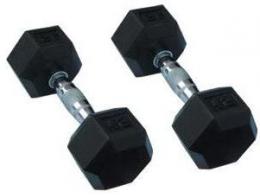What is vsaa. Bsaa - what are they for, what do they consist of and what do they give? BCAA - briefly about the main properties
2015-02-02 Views: 62 531 Grade: 5.0
 It often happens that many athletes, when choosing sports nutrition, almost do not pay attention to BCAA amino acid complexes. This is due to the fact that they either do not fully understand their meaning and importance on the path to achieving sports results, or do not know at all what BCAAs are used for. In sports, there are two opinions. The first says that BCAAs should be taken only during (the period of active weight loss). And the second says that BCAAs are best taken on time. It should be noted that this special complex of amino acids has several mechanisms of action.
It often happens that many athletes, when choosing sports nutrition, almost do not pay attention to BCAA amino acid complexes. This is due to the fact that they either do not fully understand their meaning and importance on the path to achieving sports results, or do not know at all what BCAAs are used for. In sports, there are two opinions. The first says that BCAAs should be taken only during (the period of active weight loss). And the second says that BCAAs are best taken on time. It should be noted that this special complex of amino acids has several mechanisms of action. Why and for what purposes are BCAAs used?
1. Recovery of muscle tissue
Basically and most often, BCAAs are taken for purposes after intensive training. After all, it is after heavy training in the body that the need for the use of amino acids increases significantly. As you know, these amino acids make up a third of all existing muscle proteins. And, in this regard, BCAA is rightly called the main building material for new muscle fibers.
2. For drying
The next situation in which BCAA amino acids are also often used is the so-called drying phase. During the period of active weight loss, a person goes on a low-calorie diet, which, first of all, means eating a minimum amount of carbohydrate food. At such moments, the body is looking for alternative sources of energy than fat cells, and the amino acids contained in the muscles, primarily BCAA. This is especially evident during the training process. But it is categorically impossible to allow the use of muscle protein as an energy source. This will lead to a decrease in muscle mass, and the destruction of already created muscle tissue. The use of BCAAs allows you to deceive the body, suggesting that a significant amount of carbohydrates will enter the bloodstream.
3. Energy reserve
The third mechanism of action is the ability of BCAAs to increase the body's energy potential. During heavy training sessions, exercise entails the oxidation of BCAAs and especially leucine. This occurs in order to maintain energy self-regulation by converting glucose into an energy source. Thanks to scientific research, it became known that the oxidation of the amino acid -, gives more ATP (adenosine triphosphate) than glucose.
4. Increased insulin secretion
The last and no less important reason why you need to consume BCAAs is to increase. The use of BCAA amino acids allows you to significantly increase the production of insulin. Which, in turn, is one of the main elements that provide the body with the launch of anabolic mechanisms. Based on the advice of professional athletes and the opinions of eminent scientists, we can conclude that athletes need to consume BCAA amino acid complexes.
How to take BCAA?
Such sports supplements should be taken for any purpose only according to one principle: in portions from 4 to 10 grams at a time, 2 or 3 times a day. This refers to 4-10 grams of pure BCAAs. After all, often in powders or capsules, the BCAA content is far from 100%. The main reception time is considered immediately before the start of the training process, and after its completion.What are the best BCAAs to choose?
Based on the studies and surveys, it became known that the best BCAA complexes are: . The content of BCAA amino acids per 2 capsules: Leucine - 412 mg. Isoleucine - 274 mg. Valine - 315 mg.
. The content of BCAA amino acids per 2 capsules: Leucine - 412 mg. Isoleucine - 274 mg. Valine - 315 mg.  . BCAA content per 6g serving. : Leucine - 3000 mg. Isoleucine - 1500 mg. Valine - 1500 mg.
. BCAA content per 6g serving. : Leucine - 3000 mg. Isoleucine - 1500 mg. Valine - 1500 mg.
Expert opinion
Didenko Leonid - MS in powerlifting and director of a sports nutrition store
The BCAA Amino Acid Complex (AMC) is very popular among athletes and bodybuilders, and for good reason. The effect of BCAA supplementation goes far beyond the simple building of muscle tissue. Affects the increase in muscle mass and physical performance in a way that a regular protein mixture cannot do. The feature of the product lies in the branched side chain of blocks.
![]()
![]()
The uniqueness of the additive
BCAA is made up of three amino acids:
- Leucine is the star of the trio (stimulates protein synthesis through the activation of an enzyme responsible for cell growth);
- Isoleucine is number two on the list (improves glucose metabolism and increases cellular uptake);
- Valine has a stimulating effect.
The BCAA product helps prevent muscle loss, maintain energy levels during active pumps and reduce fatigue. To achieve the desired effect, it is enough to dose correctly and use sports nutrition on time.
33% of all muscle tissue is made up of the three amino acids found in BCAAs.
When and in what doses to use
To increase performance, strength and speed up recovery, the best time to use the mixture is before, during and after training.
On training days
Most supplements are taken at certain times. The same goes for the BCAA. Sometimes, athletes make the mistake of eating sports nutrition at random. For example, a few hours before or after exercise. In this case, the effectiveness of the product may not give the expected results. During exercise, the body goes through the process of both building muscle and breaking down proteins. BCAAs prevent muscle catabolism by stimulating protein synthesis. This helps preserve muscle mass that would otherwise be lost due to a calorie deficit or exercise on an empty stomach. That is why BUA should be taken before training.
![]()
![]()
BCAAs maintain hormonal balance, which plays a role in an athlete's ability to respond to extreme training exercises. With intense physical activity, isoleucine is broken down to deliver bioenergy to muscle tissue, keeping the body working. It also contributes to the regulation of blood sugar levels and helps the muscle to properly use glucose during exercise.
Valine has an integral function and is necessary to remove excess nitrogen from the liver and transport it to other parts of the body where it is needed. BCAAs are considered the only amino acids that collect in tissues and promote protein synthesis, preventing their breakdown, and serve as an important source of fuel for muscles during active physical exertion. The mixture is consumed after a workout to facilitate the recovery process and replenish energy reserves. So, while getting plenty of protein from regular meals, it's best to supplement before, during, and after your pump to maximize muscle growth and performance.
- The mixture is taken immediately before training. For 10-15 minutes, a teaspoon of powder is diluted in a glass of water or milk, with an average weight of 85 kilograms.
- Most studies support a dose of 6-10 grams of the product for intense and prolonged exercise.
- After physical activity, consume the same amount as before the start of exercise. It is BMC that restores muscles.
On rest days
A break from training loads is not a reason for abandoning BCAAs. The powder continues to be taken during rest:
- Morning. During awakening, the process of muscle catabolism takes place. When receiving proteins at breakfast, the cells do not immediately receive the required amino acids. Therefore, with the goal of building muscle mass, it is a good time to take 5-10 grams of BCAAs immediately after sleep. At the same time, the body is immediately enriched with a portion of the energy necessary for its full activation. After all, he needs additional fuel to start working.
- Evening. For dinner, take a teaspoon of powder diluted in a glass of water, milk or yogurt. It supports the regeneration and growth of muscle cells.
Optimal portion
The absolute mode of administration and dosage of the product depends on the goals.
- Women Those who follow a normal gym schedule should stick to 20 grams per day. They consume BCAAs once or twice a day. With enhanced training, the daily dose can increase to 30 g, dividing the use by 4-5 times.
- Male dosage starts from 30 grams per day and increases in proportion to the loads.
![]()
![]()
Side effects and precautions
Despite the harmlessness of BCAAs, in some circumstances the supplement is used with caution:
- For women is pregnancy or breastfeeding. During this period, the use of BCAAs is not recommended, as there was not enough reliable evidence in either direction.
- Before surgery powder consumption is not desirable due to the effect on blood sugar levels.
- BCAAs are not to be taken on an empty stomach.. Amino acids start the digestive tract, and side effects may occur in the form of heartburn or belching. In rare cases, intestinal upset occurs.
In other moments, AMK necessary for the body will not bring anything but benefits and will not cause any violations.
Taking a serving of BCAA powder to the gym will keep your body in a positive state of protein synthesis. BCAAs have no cycle length limit and are among the most beneficial and effective supplements in any sports nutrition program.
BCAA amino acids (or BCA) is a sports supplement, which is a combination of the three most important essential amino acids for humans. English name B ranched- C hain A mino A children means amino acids with branched side chains. The daily requirement for these three amino acids is 5-6 g, or half of the total requirement for all essential amino acids¹.
I can’t do without amino acids for a long time, now I always drink during and after training and drink in capsules.
In principle, there is no point in buying individual amino acids. in any complete protein (for example, in the same protein) there is a full spectrum of amino acids. It makes no sense to overpay 2-3 times for individual amino acids.
BCAAs during training will significantly reduce the time for full recovery between workouts.
BCA amino acids in food
Speaking about BCAA amino acids (as well as about sports supplements with other amino acids), it is important to note that BCAs are just the building blocks of any protein food - from whey protein to meat, eggs and even buckwheat. In fact, the human body is able to readily obtain amino acids from most animal and plant foods.
The role is also played by the fact that amino acids with branched side chains are quite common in ordinary food - 15-20 g of animal protein easily fills the daily need for essential amino acids. Athletes who adhere to, without a doubt, get enough BCAAs. Their shortage can be observed only in vegetarians.




BCAA benefits for beginners
Once again, we note that most of the benefits attributed to BCAA amino acids (increased strength, accelerated muscle recovery and growth, optimization and other hormones) are only a description of the positive effect of any protein (including protein from food) containing these amino acids, and not a listing at all benefits of pure BCAAs.
The use of BCA amino acids in the form of separate supplements is recommended primarily for professional athletes seeking to increase the duration of strength training up to 90-120 minutes. For beginners, the intake of BCAA amino acids (just like any other amino acids in liquid form) is most often not required for muscle growth. Despite this, BCA may be useful in fat loss training.
BCAA amino acids for weight loss
In simple terms, BCAA amino acids seem to “deceive” the body, forcing it to believe that there is high-calorie food in the stomach. This activates metabolic processes and triggers the expenditure of calories - however, in the absence of real food, fat reserves are used. It is on this that the principle of the influence of BCAAs on getting rid of fat reserves is built.
However, BCAA amino acids are not a fat burner at all and can only affect weight loss in combination with a proper diet and an active one. Their only plus for weight loss is that taking BCAA capsules on an empty stomach helps reduce hunger - for which, according to reviews, girls love them.
***
There are more than 200 different amino acids in total, but only two dozen of them are critical for metabolism. Although most of these important amino acids are synthesized by the human body from each other, nine must be obtained from food. BCAA supplements contain the most important amino acids to help professional athletes train with increased efficiency.
Scientific sources
- essential amino acids. recommended daily amounts,
- Is Branched-Chain Amino Acids Supplementation an Efficient Nutritional Strategy to Alleviate Skeletal Muscle Damage?,
- Branched-chain amino acids and muscle protein synthesis in humans: myth or reality?,
- National Nutrient Database for Standard Reference,
- Optimum Nutrition Gold Standard 100% Whey,
The BCAA tablets or capsules discussed on this page are certainly a transitional link between obsolete food and the very optimal fuel of the future. They still have to be put in the mouth, but no longer need to be chewed. At the same time, BCAAs have adherents who claim that the muscles from these pills grow faster than from the most thoughtful diet, but there are also opponents. We decided to help you figure it out.
What do they put in there
In scientific terms, BCAAs are branched-chain amino acids: leucine, isoleucine, valine. They are also called essential amino acids. This is not an exaggeration: neither your nor anyone else's human body produces them. And they get these amino acids only with food. Processing foods containing BCAAs (meat, eggs) requires a lot of time and energy. To save them, BCAA complexes were invented - nutritional supplements containing essential amino acids.
Why is it needed
You probably know that protein is not directly absorbed by the body. First, it is broken down into amino acids and peptides, and muscle protein is already synthesized from them. This process is like building a new house from the ruins of an old one. The body breaks down protein foods into bricks, and then assembles new protein molecules from them. Thanks to this, you can absorb any protein, not even similar to your own (for example, the protein of nuts or mushrooms, which are not meat at all). The BCAA complex is good because it does not need to be dismantled: the amino acids in it are immediately ready for assembly.
Why not as usual
It would seem, why save time on protein processing at all? Let everything go naturally. But, alas, with serious anaerobic loads (aimed at increasing muscle mass), the BCAA reserves in you are depleted. Imagine: a lot of other, nonessential, amino acids have accumulated in the body, but you cannot start building muscles, because BCAAs have not been brought in. However, the process is started, and the body begins to destroy its own protein molecules in order to extract BCAAs from them. The assembly of some muscles, therefore, occurs at the expense of the destruction of others. Therefore, without replenishment of amino acids, the proportion of muscles in your body will remain unchanged. You can eat a tuna sandwich, but it's not guaranteed that it will split quickly enough. Pills are digested instantly.
What do they taste like
It is clear that any BCAA complex contains an inseparable trinity: leucine, isoleucine and valine. However, different manufacturers vary the proportions of amino acids and often add their own ingredients to the pills: acidifiers, vitamins, flavorings. We will not recommend any specific brands. This is a matter of taste and financial preferences (some BCAA complexes are unreasonably expensive). The main thing is to make sure that the BCAA complex you like is not a fake and that it is sold at least in a couple of countries other than Russia. Well-known manufacturers are Dymatize, Axis, Weider, Optimum Nutrition. Release form - capsules, tablets and solutions. Liquid complexes are absorbed better, but they usually have a shorter shelf life.
For the existence of an organism, a source of energy and building material for muscles is needed, and if it is a human body that leads an active lifestyle or plays sports, then it needs in large quantities. Many amino acids the human body produces on its own, but there are those that come only with food. Such amino acids are called essential. These biological compounds are aimed at tissue regeneration, they contribute to recovery after intense exercise and have a positive effect on lipid metabolism.
What are BCAAs
BCAA (eng. branched-chain amino acids) is a complex of essential amino acids with branched chains, working on the creation of new cells, in particular, muscle fibers. BCAA amino acids consist of three compounds -, isoleucine and. This complex resists the breakdown of muscle fibers (). That is why BCAAs are taken immediately before training or during and immediately after it. BCAAs are effective for both women and men, although they serve different purposes. Men are more likely to use BCAAs for an anti-catabolic effect and muscle growth, and women to improve lipid metabolism when losing weight.
Why BCAAs are needed - their main benefits:
- Increasing the energy reserve in muscle tissues.
- They have a pronounced anti-catabolic effect.
- Contribute to the normalization of metabolism and hormonal levels.
- Contribute to the improvement of mental processes, such as memory, concentration, attention.
- Positive effect on the central nervous system and immunity.
- Reduce the amount of subcutaneous fat by normalizing lipid metabolism.
- Strengthens hair, nails and skin.
- BCAAs regulate appetite.
The composition of BCAA and what are the ratios
BCAA complexes can contain different amounts of a particular amino acid, and sports nutrition manufacturers are actively using schemes for commercial purposes, passing off various ratios of leucine, isoleucine and valine for some super working formulas that promote rapid and effective muscle growth. But in reality, everything is not so good. The king of the BCAA complex is leucine. It is this amino acid that starts the process (gives a signal) to cells for. Leucine activates the production of muscle protein, and the body begins the construction of new muscle fibers. It would seem that only leucine is enough, while isoleucine and valine are not really needed. Many manufacturers of sports nutrition thought so, and today you can see BCAA products with proportions of 8:1:1 and even 10:1:1, there is also a sports supplement based on leucine without additional amino acids. However, scientists from Baylor University, having conducted a scientific experiment, proved that the 2:1:1 formula works better than other existing ones and even pure leucine. The complex with a ratio of 2:1:1 also maximizes energy and reduces fatigue, which also has a positive effect on anabolism and the athlete's well-being.
The benefits and harms of BCAA
BCAA complex during drying
During cutting or weight loss, BCAAs should be taken before or during training. A day is recommended, usually no more than two servings. Here it is appropriate to take BCAAs with full cycle amino acids. It also makes sense to take the BCAA complex before bedtime, in the morning, and add it to take immediately after a workout. However, BCAAs should not replace a full meal! Half an hour after taking amino acids, you need to eat food rich in protein and complex carbohydrates. Although the latter at significantly reduced in number.
BCAA complex for muscle gain
There are no restrictions for this purpose. The complex should be taken during training and immediately after to prevent catabolism and quickly after depletion of nutrient reserves. In this case, BCAA can be added to gainers and protein shakes after training, to creatine and pre-workout complex before training for half an hour. Together, the additives will speed up the process. On rest days amino acids can be taken between meals, as well as in the morning after waking up (can be combined with any protein) or before bedtime.
Dosage of BCAA
When choosing an amino acid complex BCAA, you should pay attention to the ratio of 2:1:1 and with an isoleucine and valine content of at least one gram of each amino acid. The optimal dose of leucine would be 3 grams per serving. The optimal dose of the BCAA complex as a whole would be 5 grams.
Conclusion
Remember, BCAAs, like them, are not a panacea for gaining muscle mass or burning fat. Only an integrated approach and hard work can bring results in this difficult task. Do not give up and go to the goal step by step.
Video about what BCAA is and how to take it






